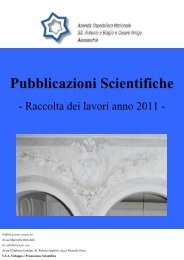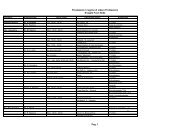Working Paper of Public Health Volume 2012 - Azienda Ospedaliera ...
Working Paper of Public Health Volume 2012 - Azienda Ospedaliera ...
Working Paper of Public Health Volume 2012 - Azienda Ospedaliera ...
You also want an ePaper? Increase the reach of your titles
YUMPU automatically turns print PDFs into web optimized ePapers that Google loves.
<strong>Azienda</strong> <strong>Ospedaliera</strong> Nazionale“SS. Antonio e Biagio e Cesare Arrigo”<strong>Working</strong> <strong>Paper</strong> <strong>of</strong> <strong>Public</strong> <strong>Health</strong>nr. 7/<strong>2012</strong>consumption may lower breast cancer by 7%. Gammon et al. (2004 p. 176) assess therelationship between environment tobacco smoke and breast cancer incidence and datasuggest that the positive association between these two variables is focused on a specificgroup <strong>of</strong> women that have a long-run exposure from a smoking spouse (cf. also Miller,2008). Instead, Conlon et al., (2010, p. 142) show that a long duration <strong>of</strong> passive smokingis associated with an increased risk <strong>of</strong> breast cancer as well as among active womensmokers, and the effects can be affected by N-acetyltransferase 2 phenotype. Other causescan be related to physiological factors <strong>of</strong> richer countries and Kruk et al. (2004) claim anassociation between major life events and breast cancer: “women with major life events,stress <strong>of</strong> daily activity, and depression had 3.7 times higher risk for breast cancer,compared to those which did not experience such stress . . . . A higher proportion <strong>of</strong> cases(89.1%) . . . reported that their job was stressful, very fretful or very responsible orexperienced a major life event” (p. 399). According to Antonova et al. (2011): “Stressexposure has been proposed to contribute to the etiology <strong>of</strong> breast cancer. However, thevalidity <strong>of</strong> this assertion and the possible mechanisms involved are not well established”.Nevertheless, the interaction <strong>of</strong> these factors on breast cancer incidence across countriesdeserves further research. Richer countries have routine mammographic screening as an accepted standard for theearly detection <strong>of</strong> breast cancer. Mammographic screening national plans and othermedical equipment increase the incidence <strong>of</strong> breast cancer but also play a vital role toreduce the mortality from breast cancer, in particular among women ages 50 to 69 years(cf. Harris et al., 2011, p. 108; Coldman and Phillips, 2011, p.117). The main role <strong>of</strong>mammographic screening has been underlined recently by several researches, althoughprevention may play a vital role for future breast cancer control (Miller, 2011; Miller2011a, p. 147). Lakkis et al. (2010) show in Lebanon the high rate <strong>of</strong> incidence <strong>of</strong> breastcancer among women in comparison with other Arab countries and this result isattributable to wide implementation <strong>of</strong> screening program. Botha et al. (2003) claim thatcountries with national screening programs have a decline <strong>of</strong> mortality such as in Englandand Wales (3.1%), Scotland (2%), The Netherlands (1%). Similar consideration forSweden where women aged 40-74 years are screened. Yip et al. (2011) argue thatdetection programs (breast examination and mammography) are important in countrieswith middle-resource but this should be associated to awareness programs about breastcancer risk. Despite the improved availably <strong>of</strong> health services (surgery, pathology,17



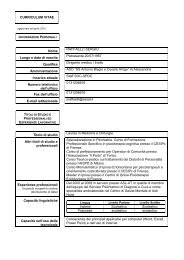
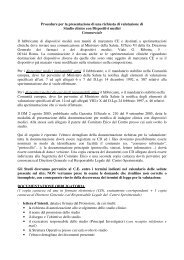

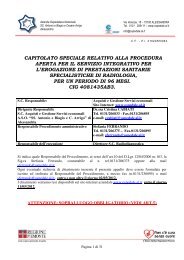
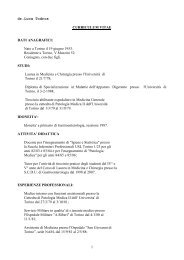
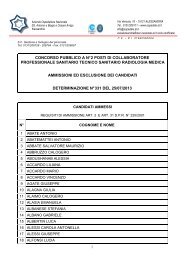

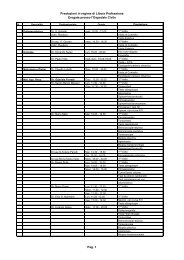


![[torino - 1] lastampa/urc/01 ... 26/10/09 - Azienda ...](https://img.yumpu.com/44058002/1/190x32/torino-1-lastampa-urc-01-26-10-09-azienda-.jpg?quality=85)

